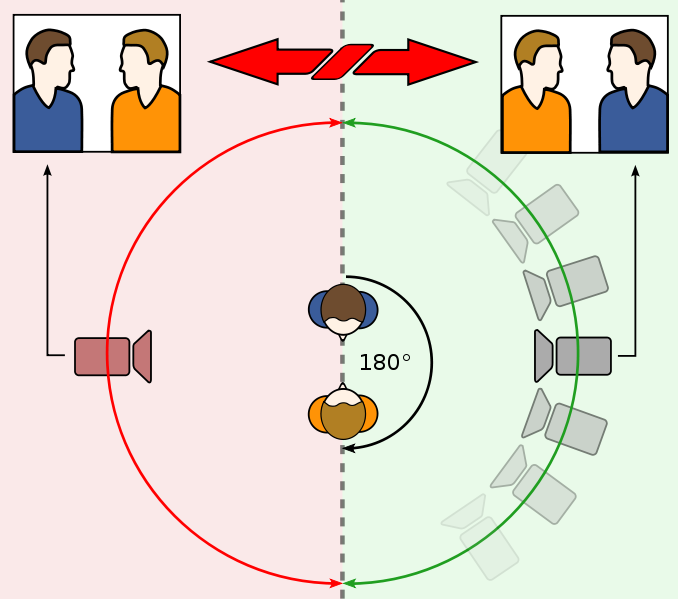e.g a 45 min train journey could be shortend into 3 shots or sequences, Getting on the train, While he/she is on the train and Getting off the train. The audience would therfore assume he is still on the train in between shots.
The video above shows how the tenis ball is thrown in one shot and it then switches to another shot of someone else catching the ball, this shows how the audience automatically assume the ball is traveling from one perosn to another.
Match on action this is a technique where you cut from one shot to another veiw that matches the action and pace of the first shot. This creates the impression of continuity even though the shots may have been filmed weeks apart. when the charecter begins action in one shot and completes it in the second a visual bridge is created, this acts as a disguise to cover up the cut from one to another.
 These pictures demonstrate two different shots, the second shot matches the action and pace of the first shot.
These pictures demonstrate two different shots, the second shot matches the action and pace of the first shot.Shot/reverse shot Shot reverse shot (or shot/countershot) is a film technique where one character is shown looking at another (often off-screen), and then the other character is shown looking back at the first character. Since the characters are shown facing in opposite directions, the viewer assumes that they are looking at each other. The video below also demonstrates this:
The 180 degree rule The 180° rule is a basic guideline that states that two characters (or any other elements) in the same scene should always have the same left/right relationship to each other. If the camera passes over the imaginary axis connecting the two subjects, it is called crossing the line. The new shot, from the opposite side, is known as a reverse angle.
e.g, if Owen (orange shirt in the diagram) is on the left and Bob (blue shirt) is on the right, then Owen would be facing right at all times, even when Bob is off the edge of the shot, and Bob should always be facing left. Shifting to the other side of the characters on a cut, so that Bob is now on the left side and Owen is on the right, will disorient the viewer, and break the flow of the scene.
This picture shows the axis between two characters and the 180° arc on which cameras may be positioned (green side). When cutting from the green arc to the red arc, the characters switch places on the screen.
The video below also demonstrates this.


No comments:
Post a Comment